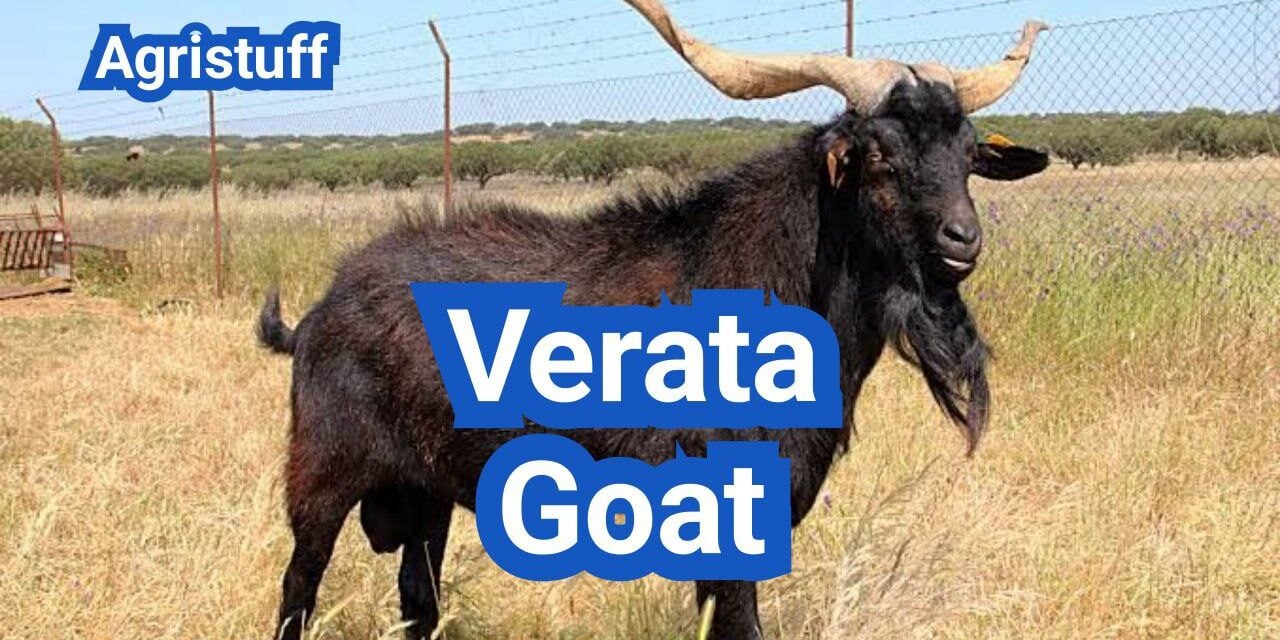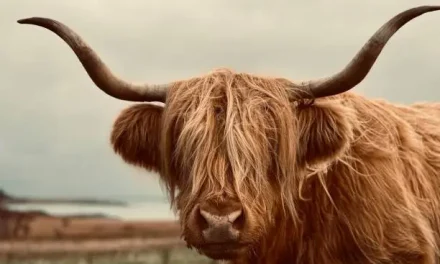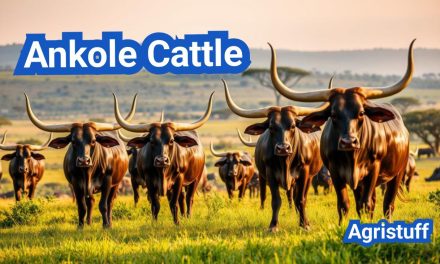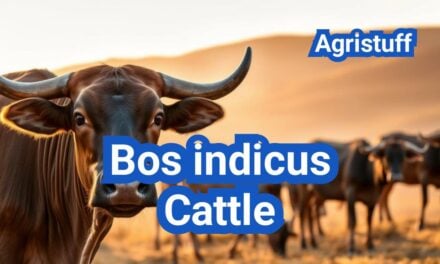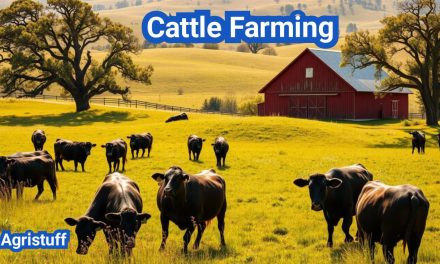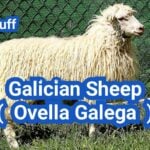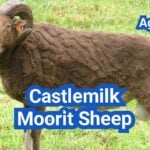The Verata goat is a traditional Spanish breed of domestic goat, known for its dual-purpose use in providing both meat and milk. This breed has a rich history and is well adapted to its native region.
Originating in Spain, the Verata goat has been reared for centuries, playing a significant role in local farming and agriculture. Its characteristics make it an ideal breed for sustainable farming practices.
Key Takeaways
- The Verata goat is a dual-purpose breed used for meat and milk production.
- It is a traditional Spanish breed with a rich history.
- The breed is well adapted to its native region and plays a significant role in local farming.
- Verata goats are ideal for sustainable farming practices.
- The breed’s characteristics make it a valuable asset for local agriculture.
Understanding the Verata Goat: A Traditional Spanish Treasure
With its rich history and unique characteristics, the Verata goat stands out as a treasured breed in Spain. This traditional Spanish breed of domestic goat has been integral to the country’s agricultural practices for centuries, valued for its hardiness and versatility.
What Makes Verata Goats Unique
The Verata goat is distinguished by its dual-purpose nature, providing both high-quality milk for cheese production and meat for cabrito, a traditional Spanish delicacy. Their adaptability to various terrains, from rugged mountains to plains, makes them an invaluable asset for farmers across different regions.
Hardiness is another key trait of the Verata goat. They are well-suited to withstand the challenges of harsh climates and poor pasture conditions, making them ideal for extensive farming systems.
Historical Significance in Spanish Agriculture
The Verata goat has a long history that dates back to ancient times in the Extremadura region of Spain. Their development over centuries has been closely tied to local agricultural practices and traditions.
| Characteristics | Description |
|---|---|
| Origin | Extremadura, Spain |
| Purpose | Dual-purpose (milk and meat) |
| Notable Traits | Hardiness, adaptability |
The historical significance of the Verata goat is evident in its continued use in traditional farming systems, contributing to the preservation of rural landscapes and cultural heritage.
History and Origin of Verata Goats

Originating in the picturesque region of Extremadura, Spain, the Verata goat has a storied past that spans centuries. This breed is deeply rooted in the comarca of La Vera, in the province of Cáceres, where it has been an integral part of the local agriculture and culture.
Ancient Roots in Extremadura, Spain
The Verata goat’s history is closely tied to the region of Extremadura, known for its rich agricultural heritage. The breed has been developed over time to thrive in the local climate and terrain, making it well-suited to the rugged landscapes of Spain. The Verata goat’s resilience and adaptability are testaments to its long history and the careful breeding practices of local farmers.
Some key factors that have influenced the Verata goat’s development include:
- The breed’s ability to navigate challenging terrain.
- Its capacity to produce high-quality milk and meat.
- The influence of local farming practices and traditions.
Development Through the Centuries
Over the centuries, the Verata goat has undergone significant development, shaped by the needs of local farmers and the demands of the agricultural environment. The breed has been refined to excel in its native region, with a focus on its dual-purpose capabilities for both milk and meat production.
The Verata goat’s development is a story of successful adaptation and selective breeding. Key milestones in its development include:
- The initial selection of goats for their hardiness and productivity.
- The refinement of breeding practices to enhance the breed’s desirable traits.
- The recognition of the Verata goat as a distinct breed, valued for its unique characteristics.
The Verata goat’s history and origin are a testament to the breed’s strength and the rich agricultural heritage of Extremadura, Spain. Understanding the breed’s past is crucial for appreciating its present and future potential in various farming contexts.
Physical Characteristics of the Verata Goat
The Verata goat is known for its robust physical characteristics, which have been shaped by centuries of adaptation to the rugged terrain of Extremadura, Spain. This breed exhibits marked sexual dimorphism, with males generally larger than females.
Size, Weight, and Appearance
The Verata goat displays significant size differences between sexes. On average, nannies reach a height of about 60 cm, while billies can stand as tall as 75 cm. Their weight also varies accordingly, with males typically being heavier. The overall appearance is sturdy, reflecting their hardiness and adaptability to challenging environments.
Distinctive Features and Coat Colors
Verata goats are recognized by their distinctive coat colors and patterns. They often display a variety of colors, contributing to their unique appearance. The coat can vary, but it is generally well-suited to the climate of their native region.
Horn Structure and Physical Traits
Both male and female Verata goats typically have horns, which are an important characteristic of the breed. The horn structure is a notable feature, adding to their overall rugged appearance. Other physical traits, such as their ears and tail, are also well-adapted to their environment.
In summary, the Verata goat’s physical characteristics, including its size, weight, coat colors, and horn structure, make it a robust and versatile breed. These traits have been developed over centuries, making the Verata goat well-suited to its native habitat and useful for various agricultural purposes.
Temperament and Behavioral Traits
Understanding the behavior of Verata goats is crucial for effective farming practices. Their temperament and behavioral traits play a significant role in their adaptability and productivity.
Natural Instincts and Personality
Verata goats are known for their rustic and hardy nature, making them well-suited to various terrains and climates. They exhibit a strong instinct for survival, which is a valuable trait for farmers looking to minimize losses.
Their personality is often described as docile, yet they can be independent and strong-willed at times. This mix of traits requires farmers to be knowledgeable and experienced in handling them.
Adaptability to Different Environments
One of the key advantages of Verata goats is their adaptability to different environments. They thrive in various conditions, from rugged terrains to more temperate climates, making them a versatile choice for farmers across different regions.
- They are capable of surviving on poor-quality forage.
- Their hardiness makes them resistant to certain diseases.
- They can adapt to different farming systems.
Working with Verata Goat Behavior
To work effectively with Verata goats, farmers need to understand their behavioral patterns. This includes recognizing signs of stress, understanding their social structure, and being aware of their foraging habits.
By understanding these aspects, farmers can create a more harmonious and productive farming environment.
How to Start Raising Verata Goats
To successfully raise Verata goats, one must begin with a solid foundation. This involves understanding the initial setup requirements, selecting quality stock, and being aware of the cost considerations.
Initial Setup Requirements
The first step in raising Verata goats is setting up the appropriate infrastructure. This includes providing adequate shelter, fencing, and feeding facilities. The shelter should protect the goats from harsh weather conditions and predators.
Fencing is crucial to contain the goats within the designated area and protect them from external threats. A well-designed fencing system can prevent escape and predator attacks, ensuring the safety of the goats.
Finding and Selecting Quality Stock
Selecting high-quality Verata goats is vital for the success of the farm. This involves sourcing goats from reputable breeders who can provide healthy animals with good genetic lineage.
It’s essential to inspect the goats for any signs of illness or genetic defects. Purchasing from a trusted source ensures that the goats are well-adapted to the local climate and have the desired characteristics.
Cost Considerations for Beginners
For those new to Verata goat farming, understanding the costs involved is crucial. The initial investment includes the cost of purchasing the goats, setting up infrastructure, and initial feeding and healthcare costs.
Ongoing expenses include feed, veterinary care, and maintenance of facilities. Beginners should also consider the cost of training or consulting with experienced farmers to ensure they are well-prepared.
By carefully planning the initial setup, selecting quality stock, and understanding the cost considerations, beginners can set themselves up for success in Verata goat farming.
Essential Housing and Facilities for Verata Goats

Providing the right facilities is crucial for Verata goat farming. Verata goats require adequate shelter and fencing to protect them from predators and harsh weather conditions. The design and quality of their housing can significantly impact their health, productivity, and overall well-being.
Shelter Design and Requirements
The shelter for Verata goats should be well-ventilated, dry, and draft-free. It should provide enough space for the goats to stand, turn around, and lie down comfortably. The roof should be sturdy enough to withstand various weather conditions, including heavy rain and snow.
Fencing and Containment Solutions
Fencing is a critical aspect of Verata goat housing. The fencing should be strong and tall enough to prevent escape and predator entry. A minimum height of 5 feet is recommended, with fencing materials like woven wire or electric fencing being effective options.
Climate Adaptations for Different Regions
Verata goats can adapt to different climates, but their housing should be adjusted accordingly. In colder climates, additional insulation and protection from wind are necessary. In hotter climates, shading and ventilation are crucial to prevent heat stress.
| Climate | Housing Adaptation | Benefits |
|---|---|---|
| Cold | Insulation, Wind Protection | Prevents hypothermia, Keeps goats warm |
| Hot | Shading, Ventilation | Reduces heat stress, Improves comfort |
By focusing on these essential housing and facilities aspects, farmers can create a healthy and productive environment for their Verata goats, ultimately enhancing their farming operation’s success.
Nutrition and Feeding Guide for Verata Goats

Nutrition plays a vital role in the health and productivity of Verata goats, making a comprehensive feeding guide essential. Verata goats, being ruminants, require a balanced diet that includes high-quality forage and appropriate supplements to thrive.
Creating an Optimal Diet Plan
To create an optimal diet plan for Verata goats, it’s crucial to understand their nutritional needs. These goats require a diet rich in fiber, with a mix of hay, grass, and grains. The quality of forage is paramount, and it should be free from mold and contaminants.
Nutritional Requirements:
- High-quality hay and grass
- Appropriate grain supplements
- Minerals and vitamins
- Adequate clean water
Feeding Practices for Different Life Stages
Verata goats have different nutritional needs at various life stages. For instance, kids require more protein for growth, while lactating does need additional energy and nutrients to support milk production.
Feeding Strategies:
- Kids: High-protein diet for growth and development
- Lactating does: Additional energy and nutrients for milk production
- Pregnant does: Balanced diet with extra care during the last trimester
Pasture Management Techniques
Effective pasture management is critical for maintaining the health of Verata goats and the quality of their feed. Techniques include rotational grazing to prevent overgrazing and ensure a constant supply of fresh forage.
By implementing these strategies, farmers can ensure that their Verata goats receive the nutrition they need to thrive, supporting overall health and productivity.
Breeding Verata Goats Successfully

To breed Verata goats effectively, one must understand their reproductive habits and apply rigorous selection standards. Breeding Verata goats is a nuanced process that requires careful planning and a thorough understanding of their reproductive cycle.
Understanding the Reproduction Cycle
The Verata goat’s reproduction cycle is a critical aspect of their breeding. These goats are seasonal breeders, typically breeding in the fall. Understanding the estrous cycle, gestation period, and factors influencing fertility is essential for successful breeding.
- Estrous Cycle: Verata goats have an estrous cycle of approximately 21 days.
- Gestation Period: The gestation period for Verata goats is about 150 days.
- Fertility Factors: Nutrition, health, and genetics play significant roles in determining fertility.
Breeding Selection Criteria
Selecting the right breeding stock is crucial for improving the quality and productivity of Verata goats. Key selection criteria include:
- Genetic Diversity: Ensuring genetic diversity to maintain a healthy and robust herd.
- Productivity: Selecting for traits such as milk production, growth rate, and fertility.
- Conformation: Evaluating the physical conformation of goats to ensure they meet breed standards.
Kid Rearing and Management
Effective kid rearing and management are vital for the success of a Verata goat breeding program. This includes ensuring proper nutrition, health care, and socialization of the kids.
- Nutrition: Providing adequate nutrition for optimal growth and development.
- Health Care: Implementing a robust health care program to prevent diseases.
- Socialization: Ensuring kids are well-socialized to humans and other goats.
By understanding the reproduction cycle, applying rigorous breeding selection criteria, and managing kid rearing effectively, breeders can achieve success in Verata goat breeding.
Health Management and Disease Prevention

Maintaining the health of Verata goats involves a combination of proper nutrition, regular health checks, and disease prevention strategies. These goats are generally hardy, but like all livestock, they can be susceptible to certain health issues if not properly managed.
Common Health Issues and Solutions
Verata goats can be prone to internal parasites, respiratory infections, and reproductive issues. Regular monitoring and timely veterinary interventions are crucial for preventing these issues from becoming severe.
Internal Parasites: Regular deworming and pasture management are essential to control internal parasites.
Respiratory Infections: Providing adequate ventilation in shelters and minimizing stress can help prevent respiratory infections.
Vaccination Schedules and Health Monitoring
Implementing a proper vaccination schedule is vital for protecting Verata goats against diseases such as Clostridium and Pasteurella. Regular health monitoring helps in early detection of diseases, allowing for timely intervention.
| Disease | Vaccination Frequency | Symptoms to Monitor |
|---|---|---|
| Clostridium | Annually | Sudden death, neurological symptoms |
| Pasteurella | Semi-annually | Respiratory distress, fever |
Parasite Control Strategies
Effective parasite control involves a combination of management practices, including rotational grazing, selective deworming, and maintaining clean living conditions. Monitoring for parasite resistance is also crucial.
By adopting a comprehensive health management plan, farmers can significantly improve the health and productivity of their Verata goats, ensuring a sustainable and profitable farming operation.
Maximizing Milk Production from Verata Goats

Maximizing milk production from Verata goats requires a comprehensive understanding of their milking needs and techniques. Verata goats are known for their rich milk, which is used to produce high-quality dairy products, including the renowned Ibores cheese.
Milking Techniques and Equipment
Effective milking practices are crucial for optimizing milk yield. This includes using appropriate milking equipment that ensures the comfort and health of the goats. Regular milking schedules and proper hygiene practices are also essential.
Milking Techniques:
- Pre-milking preparation to stimulate milk letdown
- Proper hand milking or machine milking techniques
- Post-milking care to prevent mastitis
Processing Milk for Ibores Cheese and Other Products
The milk from Verata goats is particularly suited for producing Ibores cheese, a protected designation of origin (PDO) cheese in Spain. Processing this milk involves careful handling to maintain its quality and characteristics.
Key Steps in Processing:
- Cooling and storing milk at appropriate temperatures
- Using traditional or modern cheese-making techniques
- Aging and maturing cheese to enhance flavor
Improving Yield and Quality
To improve milk yield and quality, farmers can implement several strategies. These include providing a nutritious diet, ensuring access to clean water, and maintaining the overall health of the goats.
| Strategy | Benefit |
|---|---|
| Nutritional Diet | Enhanced milk production |
| Health Monitoring | Reduced risk of disease |
| Proper Milking Practices | Improved milk quality |
By focusing on these areas, dairy farmers can maximize the potential of their Verata goats, leading to higher quality milk and dairy products.
Meat Production: Raising Verata Goats for Cabrito

Cabrito, or young goat meat, is a delicacy that Verata goats are well-suited for due to their fast growth rates and tender meat. The production of cabrito involves raising Verata goats specifically for their meat, which is highly valued for its quality and flavor.
Growth Rates and Optimal Slaughter Age
Verata goats are known for their rapid growth, which makes them ideal for cabrito production. The optimal slaughter age for cabrito is typically between 4 to 6 weeks, when the kids are still young and their meat is tender.
Growth Rate Comparison
| Age (Weeks) | Average Weight (kg) |
|---|---|
| 4 | 10 |
| 6 | 15 |
Meat Quality Characteristics
The meat of Verata goats is characterized by its tenderness, fine texture, and mild flavor, making it a preferred choice for cabrito. The quality of the meat is influenced by factors such as diet, breeding practices, and handling.
Marketing and Processing Considerations
Marketing Verata goat meat involves highlighting its unique qualities, such as its tenderness and the traditional farming practices used. Processing considerations include adhering to food safety standards and using appropriate packaging to maintain the quality of the meat.
By focusing on these aspects, farmers can successfully raise Verata goats for cabrito, meeting the demand for this delicacy while maintaining high standards of quality and sustainability.
Verata Goats in the United States
Although the Verata goat is well-established in Spain, its presence in the U.S. is relatively recent and limited. As American farmers look for diverse and adaptable breeds, the Verata goat is gaining attention for its unique characteristics and productivity.
Current Population and Distribution
The current population of Verata goats in the United States is relatively small compared to other goat breeds. They are primarily found in regions with suitable climates and terrain that mimic their native Extremadura region in Spain. Farmers in areas with mild winters and dry summers are finding the Verata goat to be a suitable choice.
Adaptation to American Farming Systems
Verata goats are adapting well to American farming systems due to their hardiness and versatility. They are being used for both milk and meat production, making them a valuable asset for farmers looking to diversify their products. The breed’s ability to thrive in various conditions is a significant advantage.
Finding Breeders and Stock in the U.S.
For those interested in acquiring Verata goats, finding breeders and quality stock can be challenging due to their relatively low numbers in the U.S. However, there are breeders who specialize in importing and breeding Verata goats, and they can be found through agricultural networks and breed associations.
Comparing Verata Goats with Other Breeds
When considering goat breeds for farming, the Verata goat is often compared to other notable breeds. This comparison is essential to understand the unique characteristics and advantages of Verata goats.
Differences Between Verata Goats and Ibex
Verata goats and Ibex are both known for their agility and adaptability to rugged terrains. However, Verata goats are generally more docile and easier to manage than Ibex, which are known for their wild nature.
A key difference lies in their purpose: Verata goats are primarily raised for milk and meat, while Ibex are often considered for conservation and hunting purposes.
Verata vs. Other Spanish Mountain Goats
Compared to other Spanish mountain goats, Verata goats are distinguished by their robust constitution and higher milk production. For instance, a study comparing various Spanish goat breeds highlighted that Verata goats have a stronger resistance to disease.
| Breed | Milk Production (liters) | Disease Resistance |
|---|---|---|
| Verata | 500-700 | High |
| Ibex | 100-300 | Moderate |
| Other Spanish Mountain Goats | 300-500 | Variable |
Advantages Over Other Dual-Purpose Breeds
Verata goats offer several advantages over other dual-purpose breeds. They are known for their high fertility rates and kid survival rates, making them an attractive choice for farmers.
“Verata goats are renowned for their ability to thrive in challenging environments, making them an excellent choice for farmers in regions with harsh climates.”
Additionally, Verata goats are well-adapted to extensive farming systems, requiring less intensive management compared to other breeds.
Economic Aspects of Verata Goat Farming
Understanding the economic aspects of Verata goat farming is crucial for its success. This breed offers a unique opportunity for farmers to diversify their agricultural ventures and tap into niche markets.
Investment Requirements and Returns
The initial investment for Verata goat farming includes purchasing high-quality breeding stock, setting up appropriate housing and fencing, and initial feeding costs. The returns can be substantial, especially when selling products like Ibores cheese or cabrito meat.
| Initial Investment | Potential Returns |
|---|---|
| Breeding Stock: $1,000 – $3,000 | Sale of Ibores Cheese: $5,000 – $10,000/year |
| Housing and Fencing: $2,000 – $5,000 | Cabrito Meat Sales: $3,000 – $6,000/year |
| Initial Feeding Costs: $500 – $1,000 | Total Potential Returns: $8,000 – $16,000/year |
Market Opportunities for Products
The market for Verata goat products is growing, driven by demand for artisanal cheeses and specialty meats. Farmers can capitalize on this trend by developing a strong brand and marketing strategy.
“The demand for high-quality, artisanal goat products is on the rise, presenting a significant opportunity for Verata goat farmers.”
— Agricultural Market Analyst
Developing a Sustainable Business Model
A sustainable business model for Verata goat farming involves diversifying products, maintaining high animal welfare standards, and implementing environmentally friendly practices. This approach not only ensures long-term profitability but also contributes to the preservation of the breed.
Conservation and Sustainable Farming Practices
Sustainable farming practices play a crucial role in the conservation of the Verata goat, a breed deeply rooted in Spanish heritage. The long-term viability of this traditional breed depends on effective conservation efforts and farming methods that support its unique characteristics.
Breed Preservation Efforts
Participating in breed preservation efforts is essential for maintaining the genetic diversity of the Verata goat. This involves collaborating with breeders, conservation organizations, and agricultural communities to protect the breed from extinction. By supporting breed preservation, farmers can help ensure the continued survival of the Verata goat.
Environmental Benefits
Verata goat farming offers several environmental benefits, including the maintenance of open spaces and the promotion of biodiversity. These goats are well-adapted to the challenging terrain of their native Extremadura region in Spain, where they play a crucial role in shaping the landscape through their grazing activities.
| Environmental Benefit | Description |
|---|---|
| Maintenance of Open Spaces | Grazing activities help keep landscapes open, preventing the encroachment of shrubs and maintaining ecosystem balance. |
| Promotion of Biodiversity | By grazing on a variety of vegetation, Verata goats contribute to the diversity of plant species in their habitats. |
Integrating Traditional and Modern Systems
The integration of traditional farming practices with modern, sustainable methods is key to the successful conservation of the Verata goat. This approach not only preserves the breed’s heritage but also enhances its productivity and adaptability to changing environmental conditions.
By adopting sustainable farming practices and participating in breed preservation efforts, farmers and conservationists can work together to ensure the long-term survival of the Verata goat breed.
Embracing the Future with Verata Goats
The Verata goat breed has proven to be a valuable asset in sustainable goat farming, offering a unique combination of hardiness and adaptability. As discussed, its rich history, distinct physical characteristics, and versatile uses make it an attractive choice for farmers worldwide.
By adopting sustainable farming practices and leveraging the Verata goat’s natural traits, farmers can improve their productivity while minimizing their environmental footprint. The potential for Verata goats in the future of goat farming is vast, with opportunities for growth in milk and meat production, as well as conservation efforts.
As the agricultural industry continues to evolve, embracing breeds like the Verata goat will be crucial for building a more sustainable food system. With its strong heritage and adaptability, the Verata goat is poised to play a significant role in shaping the future of goat farming.
FAQ
What is the origin of the Verata goat breed?
The Verata goat breed originates from Extremadura, Spain, and has been developed over centuries.
What are the characteristics of Verata goats?
Verata goats are known for their hardiness, adaptability, and dual-purpose use for milk and meat production.
What is the average weight and size of Verata goats?
Verata goats typically have a medium size, with does weighing between 40-60 kg and bucks weighing between 60-80 kg.
How do I start raising Verata goats?
To start raising Verata goats, you need to set up appropriate housing and fencing, select quality stock, and understand their nutritional and health needs.
What are the housing requirements for Verata goats?
Verata goats require shelter that protects them from extreme weather conditions, adequate fencing to prevent escape, and sufficient space for movement.
What is the diet and feeding plan for Verata goats?
Verata goats are ruminants and require a diet rich in fiber, including pasture, hay, and grains, with adjustments based on their life stage and production level.
How do I breed Verata goats successfully?
Successful breeding of Verata goats involves understanding their reproduction cycle, selecting appropriate breeding stock, and managing kid rearing.
What are the common health issues in Verata goats?
Common health issues in Verata goats include parasites, respiratory infections, and reproductive problems, which can be managed through vaccination, health monitoring, and parasite control.
Can Verata goats be used for milk production?
Yes, Verata goats are used for milk production, and their milk is used to make products like Ibores cheese.
Are Verata goats suitable for meat production?
Yes, Verata goats are also raised for meat, known as cabrito, and are valued for their growth rates and meat quality.
Are Verata goats available in the United States?
Verata goats can be found in the United States, although their population is limited; breeders can be located through breed associations and agricultural networks.
How do Verata goats compare to other breeds?
Verata goats are compared to other breeds like Ibex for their hardiness and to other dual-purpose breeds for their milk and meat production capabilities.
What are the economic benefits of raising Verata goats?
Raising Verata goats can provide economic benefits through the sale of milk, meat, and other products, as well as through sustainable farming practices.
How can I participate in Verata goat breed preservation?
Participation in Verata goat breed preservation can be achieved by joining breed associations, supporting conservation efforts, and promoting the breed’s unique characteristics.
What are the environmental benefits of Verata goat farming?
Verata goat farming can have environmental benefits, including land management through grazing, which can help maintain ecosystems and biodiversity.
Conclusion of: Verata Goat Breed
Introduction to Verata Goat
Verata Goat is a traditional Spanish dual-purpose goat breed that is gaining attention among farmers, smallholders and goat enthusiasts who are interested in hardy, efficient and locally adapted livestock. Originating in western-central Spain, Verata Goat has been shaped for generations by mountain conditions, limited feed resources and family-scale farming systems.
For today’s producers, especially in regions with hot summers and rugged terrain, Verata Goat offers a valuable model of how a medium-sized goat can convert rough forage into milk and meat while remaining resilient and manageable. Learning about Verata Goat history, characteristics, breeding and uses can help you compare it with other goat breeds and design a system that fits your land and goals, whether you are in Spain, the USA or elsewhere in the world. Learn more about goats on Wikipedia
History and origin of Verata Goat
The story of Verata Goat begins in the comarca of La Vera, in the northern part of Cáceres province in the Extremadura region of Spain. In this mountainous landscape, small farms and shepherds selected animals that could climb steep slopes, browse shrubs and survive periods of feed shortage. Over many decades, this natural and human selection produced Verata Goat as a distinct local breed with a recognizable appearance and production pattern.
Verata Goat became closely linked with traditional mixed farming systems, providing milk, meat and even manure for local crops and gardens. As Spain modernized, many local breeds declined, but Verata Goat remained present thanks to the dedication of regional farmers and, more recently, official conservation programs. When you study the origin of Verata Goat, you are also looking at the history of rural life, family farming and landscape management in La Vera and surrounding areas. Read about the Extremadura region on Wikipedia
Geographic distribution and environment of Verata Goat
Although Verata Goat was originally concentrated in La Vera, the breed gradually spread into other parts of Extremadura and neighboring provinces as farmers moved or sold breeding stock. Today, most Verata Goat herds are still located in western-central Spain, where goats graze on a mosaic of mountain pastures, oak woodlands, scrublands and small cultivated plots. Verata Goat is particularly well adapted to Mediterranean climates with hot, dry summers and cool, wet winters, making the breed suitable for rough grazing areas that are not ideal for more demanding livestock.
In their home range, Verata Goat herds often play a key role in preventing shrub encroachment, maintaining open landscapes and reducing wildfire risk. When U.S. producers look for breeds with strong environmental adaptation, the way Verata Goat thrives in challenging terrain is an important point of comparison. Explore FAO resources on livestock and the environment
Physical characteristics of Verata Goat
Verata Goat is a medium-sized breed with a strong, compact body that reflects its mountain origin. Adult Verata Goat bucks are typically heavier and more muscular than does, but both sexes show good bone strength and well-developed legs for climbing rocky hillsides. The coat of Verata Goat is usually short and smooth, with colors ranging from black and dark brown to grayish tones, sometimes with lighter markings on the muzzle, legs or underside.
One of the most striking features of Verata Goat is its large, twisted horns, present in both males and females, which curve outward and forward in a distinctive spiral pattern. Many verata goats also have a noticeable beard, especially the bucks, adding to their rustic and characteristic appearance. These physical traits help farmers and breeders easily distinguish Verata Goat from other Spanish goat breeds and make the animals visually impressive in any herd. Visit Spain’s Ministry of Agriculture for official livestock information
Temperament and adaptability of Verata Goat
Temperament is a practical concern for any livestock farmer, and Verata Goat is generally appreciated for being active on pasture yet reasonably docile under routine handling. In many traditional systems, Verata Goat herds are guided by a shepherd or managed with minimal fencing, which favors goats that can be controlled and directed without excessive stress. Verata Goat shows a good balance between alertness and calm behavior, which helps during milking, veterinary checks and routine management.
Adaptability is another major strength of Verata Goat: the breed can handle significant fluctuations in temperature, long distances on rough terrain and variable forage quality. These traits make Verata Goat an excellent example of a “rustic” breed that remains productive under extensive or semi-extensive conditions where more specialized, high-output breeds might struggle. Learn about global animal genetic resources in FAO DAD-IS
Milk production and dairy uses of Verata Goat
Verata Goat is classified as a dual-purpose breed, but milk has historically been one of its most important products. Does of Verata Goat typically produce a moderate volume of milk when compared with high-yield dairy breeds, yet the milk is rich in fat and protein, making it excellent for cheese production. In Extremadura, Verata Goat milk, often blended with milk from other local breeds, is used to produce traditional cheeses that are valued for their flavor, texture and regional identity.
The composition of Verata Goat milk supports the production of ripened and semi-ripened cheeses, yogurts and other fermented dairy products with desirable sensory properties. For small-scale or artisanal dairy operations, Verata Goat demonstrates how a hardy, medium-yield goat can still support a profitable niche in the value chain by focusing on quality and tradition rather than sheer volume. Read FAO information on dairy production systems
Meat production and kid quality of Verata Goat
In addition to milk, Verata Goat is well known for producing high-quality kid meat that is appreciated in local cuisine. Many farmers raise Verata Goat kids for “cabrito” or milk-fed kid, where young animals are slaughtered at a relatively early age while still nursing. This results in tender, pale meat with mild flavor, suitable for roasting and traditional recipes that are popular in Spanish households and restaurants. Verata Goat kids show good growth rates under their mothers and on pasture, which helps farmers achieve efficient meat production even in low-input systems.
For producers interested in direct marketing or supplying ethnic markets that value goat meat, Verata Goat provides a useful reference for how a dual-purpose breed can deliver both dairy products and flavorful kid meat as part of a diversified farm enterprise. Check USDA resources on meat and livestock markets
Breeding, reproduction and herd management of Verata Goat
Like other traditional breeds, Verata Goat has long been bred under practical, farm-level conditions where fertility, mothering ability and survival on pasture matter as much as production. Does of Verata Goat are known for good maternal behavior, attentive kid care and acceptable kidding rates under extensive management. Breeding seasons may be timed to match forage availability, with many Verata Goat herds kidding in periods when pasture quality is rising, which supports kid growth and milk production.
Modern herd-book programs encourage breeders to record pedigrees, track performance and avoid excessive inbreeding, helping maintain the genetic health of the Verata Goat population. For farmers considering similar breeds, the example of Verata Goat underscores the importance of pairing selection for productivity with careful management of fertility, health and adaptation traits. See Spanish government resources on animal breeding and genetics
Production systems, feeding and welfare of Verata Goat
Verata Goat is typically raised in semi-extensive or extensive systems where goats spend much of the year grazing and browsing natural vegetation. These systems make full use of the breed’s strong walking ability, robust hooves and preference for shrubs, tree leaves and rough forage that larger ruminants may ignore. Supplemental feeding with hay, concentrates or by-products is provided during critical periods such as late pregnancy, early lactation or severe droughts.
Good welfare for Verata Goat, as for any breed, depends on access to clean water, shelter from extreme weather, appropriate mineral supplementation and regular health checks. Because Verata Goat is so well adapted to outdoor living, welfare programs can focus on preventive care and good grazing management rather than intensive housing. For land managers, Verata Goat herds also offer an eco-friendly tool for fuel-load reduction and habitat maintenance. Visit OSU Extension for practical livestock management resources
Milk quality, growth and research on Verata Goat
Over the years, Verata Goat has been included in several scientific studies that examine milk quality, kid growth and overall performance in Mediterranean conditions. Research has reported that Verata Goat milk often shows favorable fat and protein contents suitable for cheese-making, while kid growth rates are acceptable under both traditional and semi-intensive systems.
Studies on blood parameters, body condition and lactation curves of Verata Goat help veterinarians and breeders identify normal reference ranges and design nutrition plans that match the breed’s needs. Some research has also explored how different feeding strategies or management practices influence the meat quality of Verata Goat kids. For anyone interested in evidence-based goat farming, the scientific work on Verata Goat illustrates how local breeds can be evaluated and improved without losing their rustic character. Explore FAO publications on animal production research
Genetic diversity and conservation status of Verata Goat
Because Verata Goat is a regional, autochthonous breed with a limited population size, it is often listed as a breed at risk that requires conservation efforts. Genetic diversity within Verata Goat is valuable not only for the breed itself, but also as a reservoir of traits such as disease resistance, heat tolerance and efficient use of poor forage.
Conservation programs for Verata Goat combine in situ measures, such as support for breeders maintaining herds in the traditional area, with ex situ strategies like genetic material banks. Maintaining a healthy level of genetic variation in Verata Goat helps protect the breed from future challenges and ensures that breeders can continue to select animals suited to changing environments and markets. For global livestock diversity, Verata Goat represents one of many local breeds whose preservation is essential for a resilient agricultural system. Browse global livestock breeds in FAO DAD-IS
Socio-economic role and future prospects of Verata Goat
In its home region, Verata Goat is far more than just an animal in the pasture; it is deeply connected to the culture, economy and identity of rural communities. Small farms that keep Verata Goat often depend on a mix of income sources, including milk sales, cheese production, kid meat and agro-tourism activities. Local festivals, markets and food fairs frequently highlight traditional products made from Verata Goat milk or meat, reinforcing the breed’s cultural value.
Looking to the future, the success of Verata Goat will likely depend on adding value through quality labels, regional brands and direct marketing that highlight its unique story and environmental benefits. When consumers choose products linked to Verata Goat, they help support rural livelihoods, conserve genetic resources and maintain landscapes shaped by grazing. Read about livestock and rural livelihoods at FAO
Relevance of Verata Goat for U.S. and international producers
Although Verata Goat itself is not yet common in the United States, the breed offers important lessons for producers who are planning sustainable goat enterprises. Many American homesteaders and ranchers operate on marginal land, where browsing animals must cope with heat, uneven terrain and seasonal forage shortages.
Verata Goat shows how a medium-sized, dual-purpose goat can remain productive in such conditions, provided that management matches the environment. U.S. farmers interested in similar traits can look at locally available meat and dual-purpose breeds that share key features with Verata Goat, such as strong legs, hardy hooves, browsing behavior and good kid growth under low-input feeding. Extension materials on fencing, parasite control, nutrition and marketing can then be tailored to a system inspired by the strengths of Verata Goat but adapted to local breeds, regulations and consumer preferences. Review OSU Extension’s meat goat production resources
Final thought
Verata Goat brings together history, resilience and dual-purpose productivity in a way that makes it stand out among Mediterranean goat breeds and offers a valuable model for sustainable farming. By examining how Verata Goat has been shaped by the landscapes and communities of La Vera, we gain insight into designing goat systems that respect both environmental limits and human needs.
For U.S. readers and other international producers, Verata Goat can serve as a benchmark when evaluating breeds that need to perform on rough terrain, under hot climates and with modest inputs. Whether or not Verata Goat itself ever becomes widely available outside Spain, the principles learned from this breed—matching animals to environment, focusing on quality and preserving genetic diversity—will remain essential for the future of goat farming worldwide. Explore global livestock breeds at Oklahoma State University
Sources & References
Below are some authoritative sources where you can explore broader context about goats, livestock breeds and Mediterranean farming systems related to Verata Goat and similar breeds.
- Verata (goat breed) – Wikipedia
- Visit the FAO homepage for official agricultural information
- Wikipedia – Goat (general species information)
- Wikipedia – Extremadura (regional context for Verata Goat)
- Spain’s Ministry of Agriculture, Fisheries and Food (official livestock and breed policies)
- FAO DAD-IS – Domestic Animal Diversity Information System
- Oklahoma State University Extension – Livestock and meat goat resources
- USDA – United States Department of Agriculture

